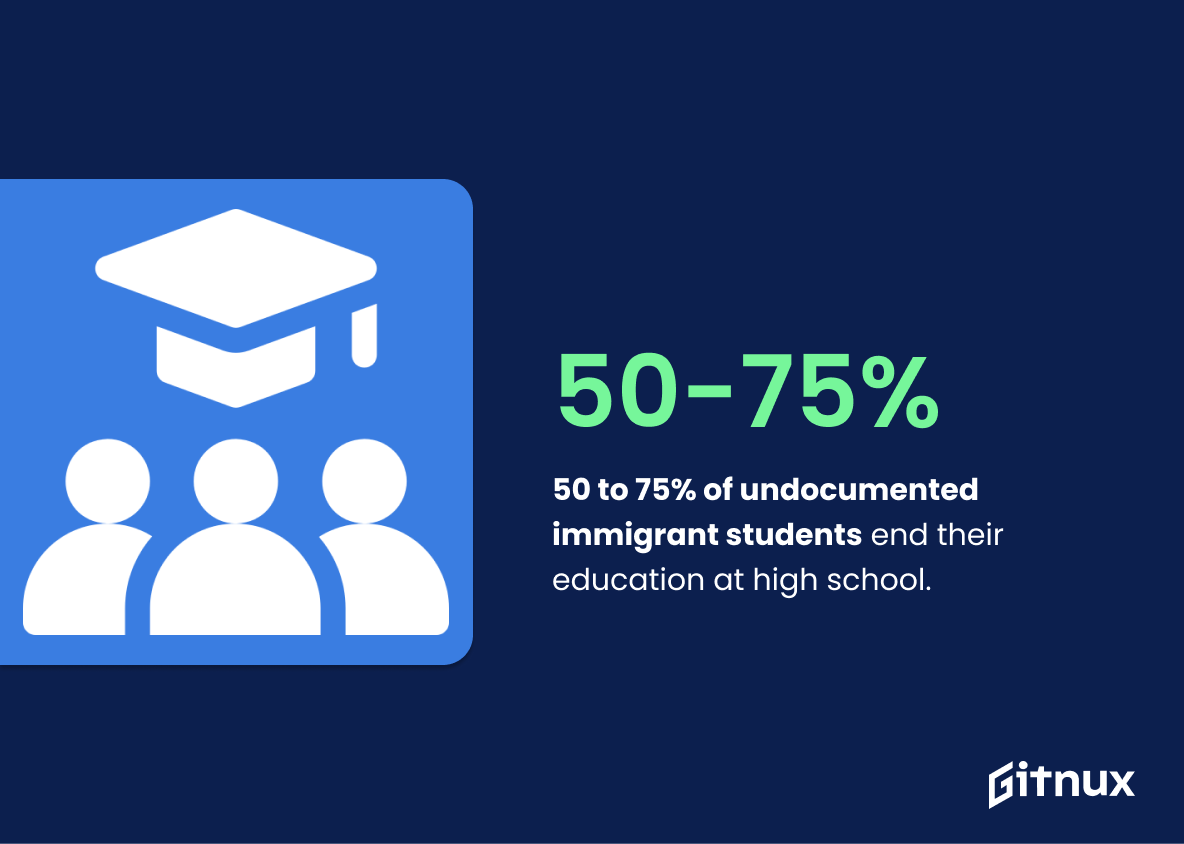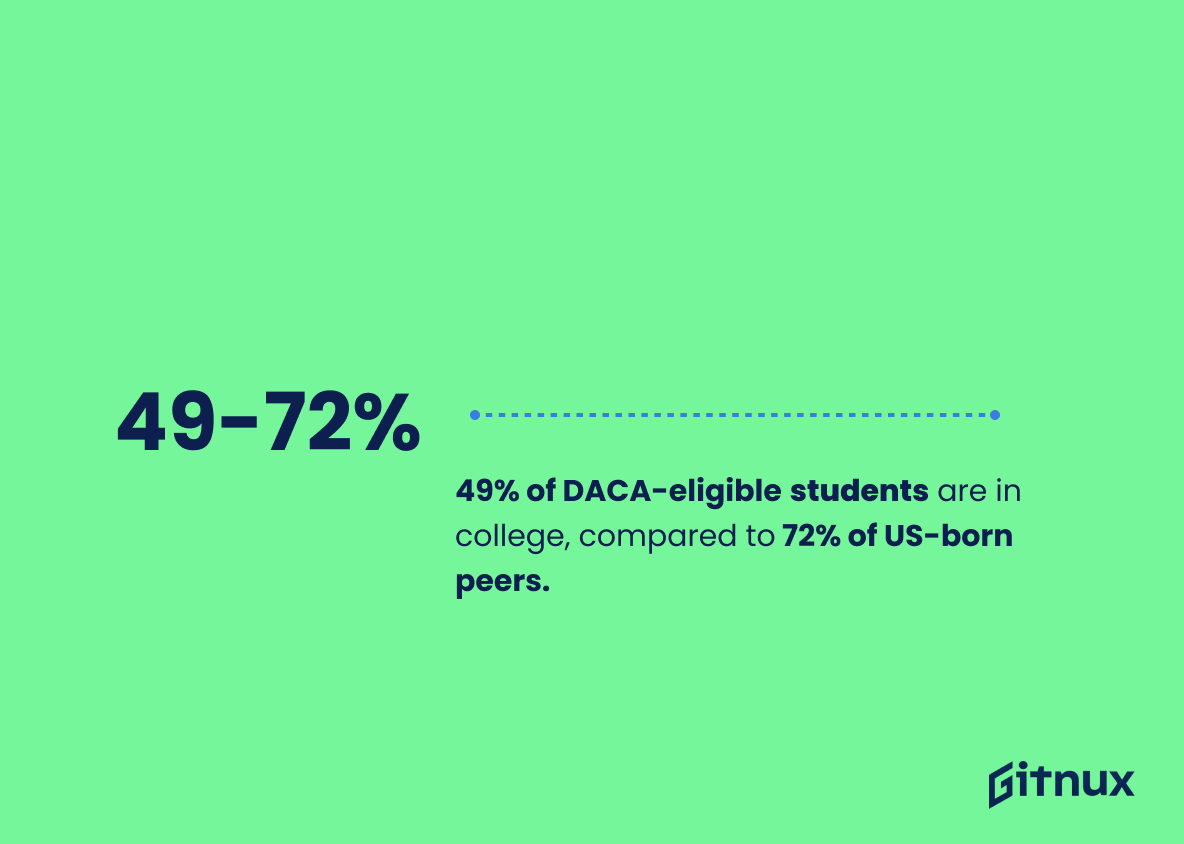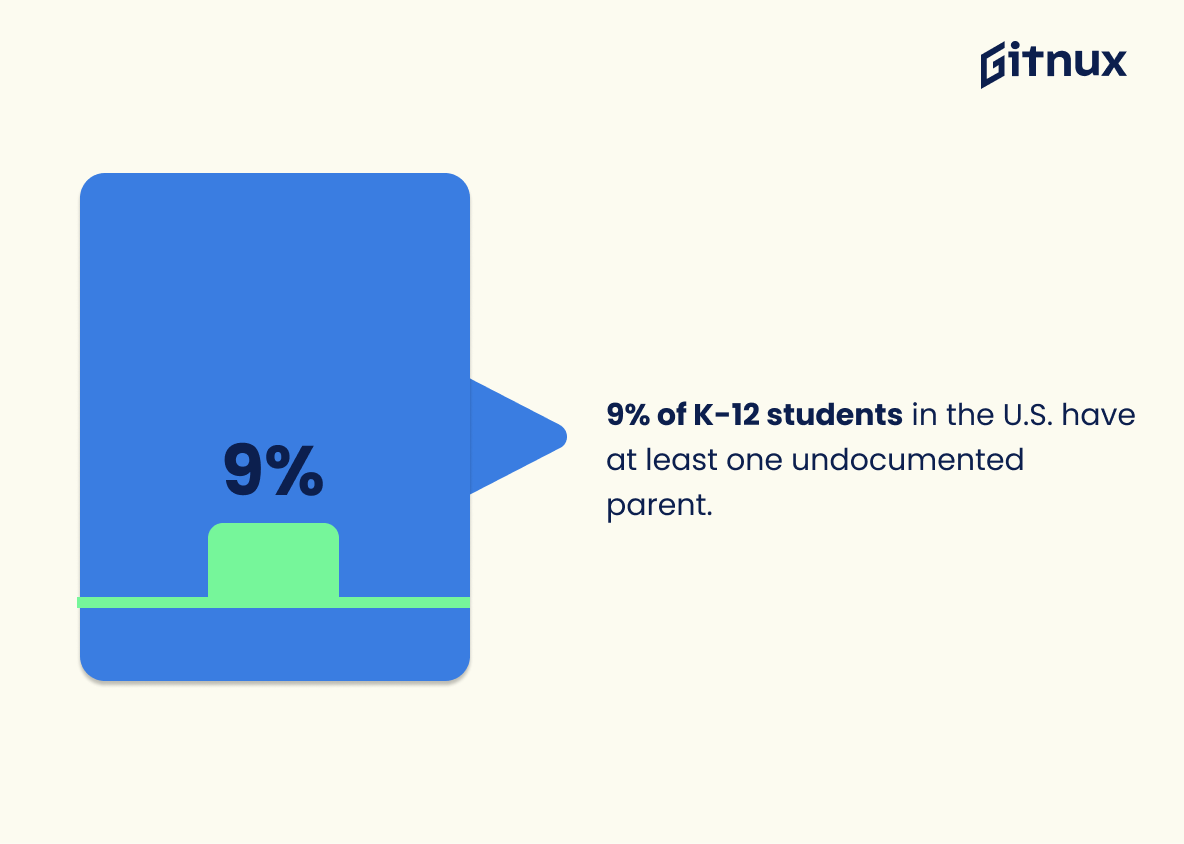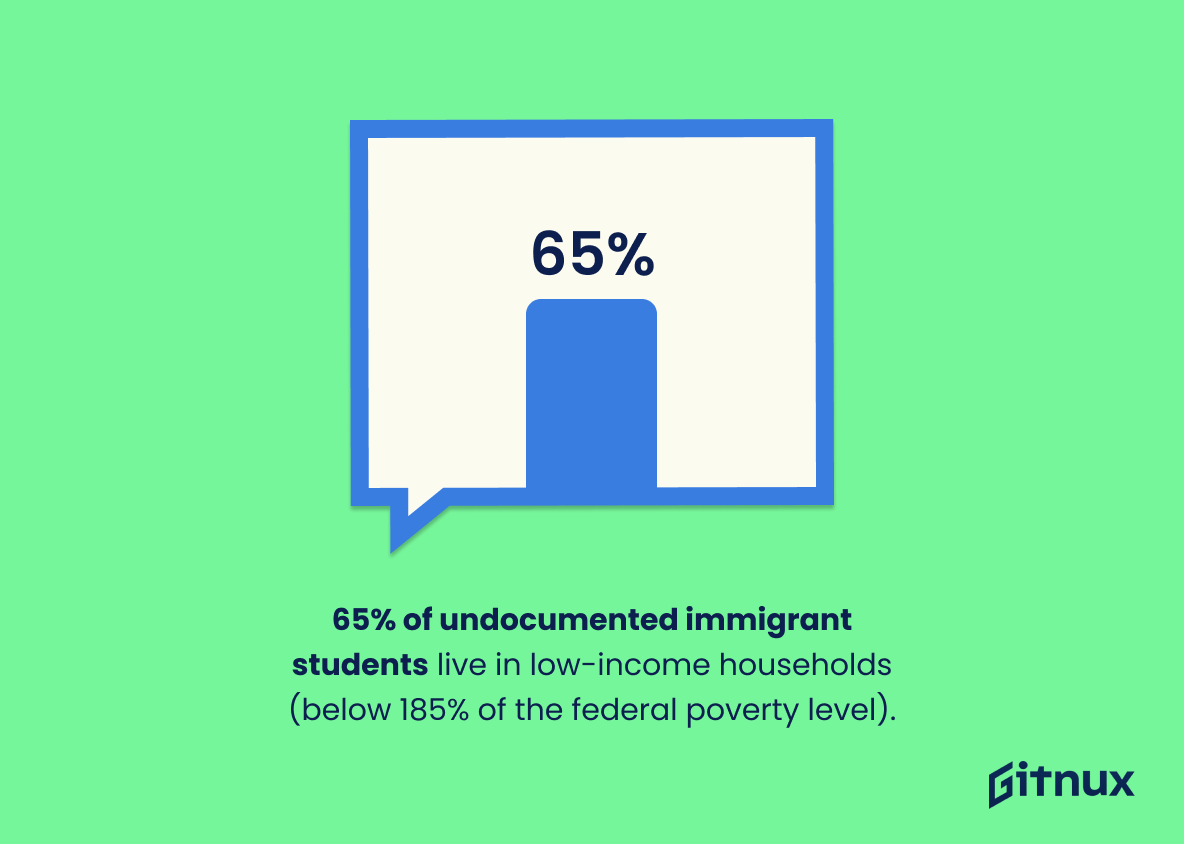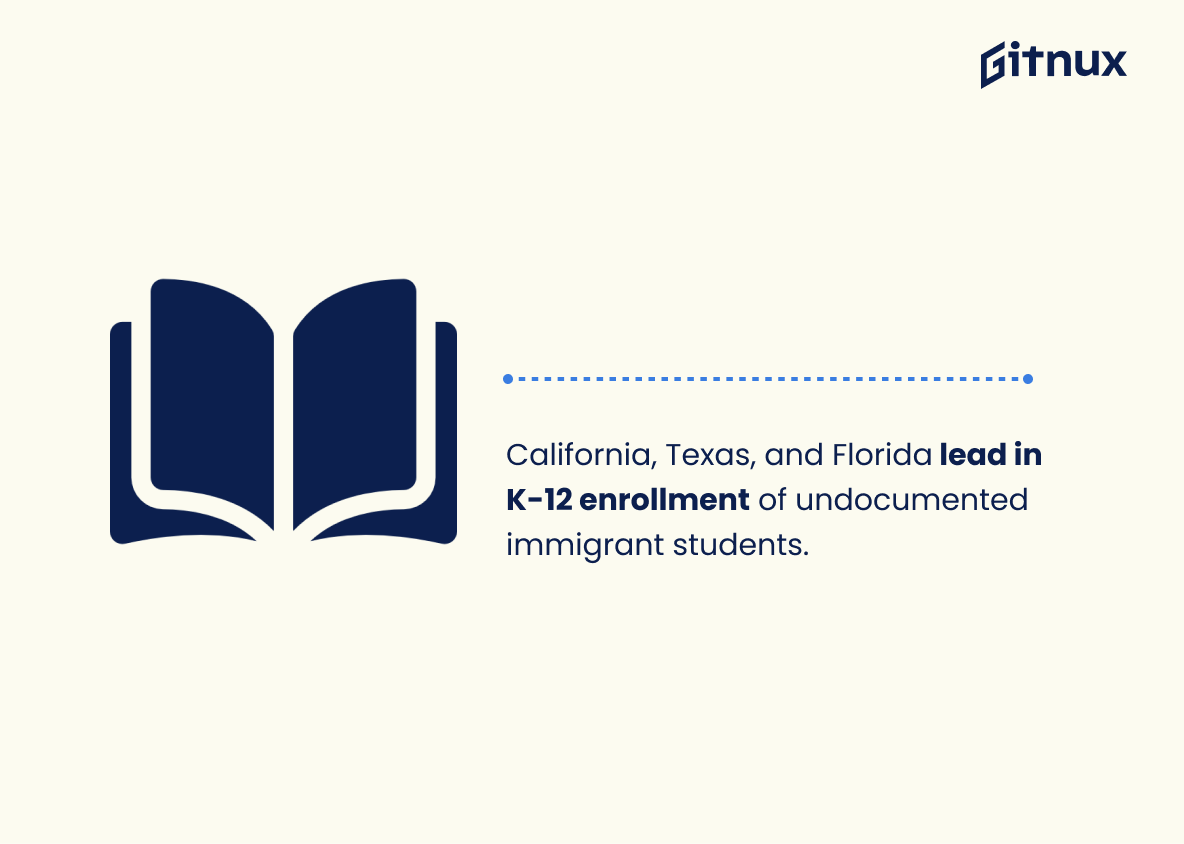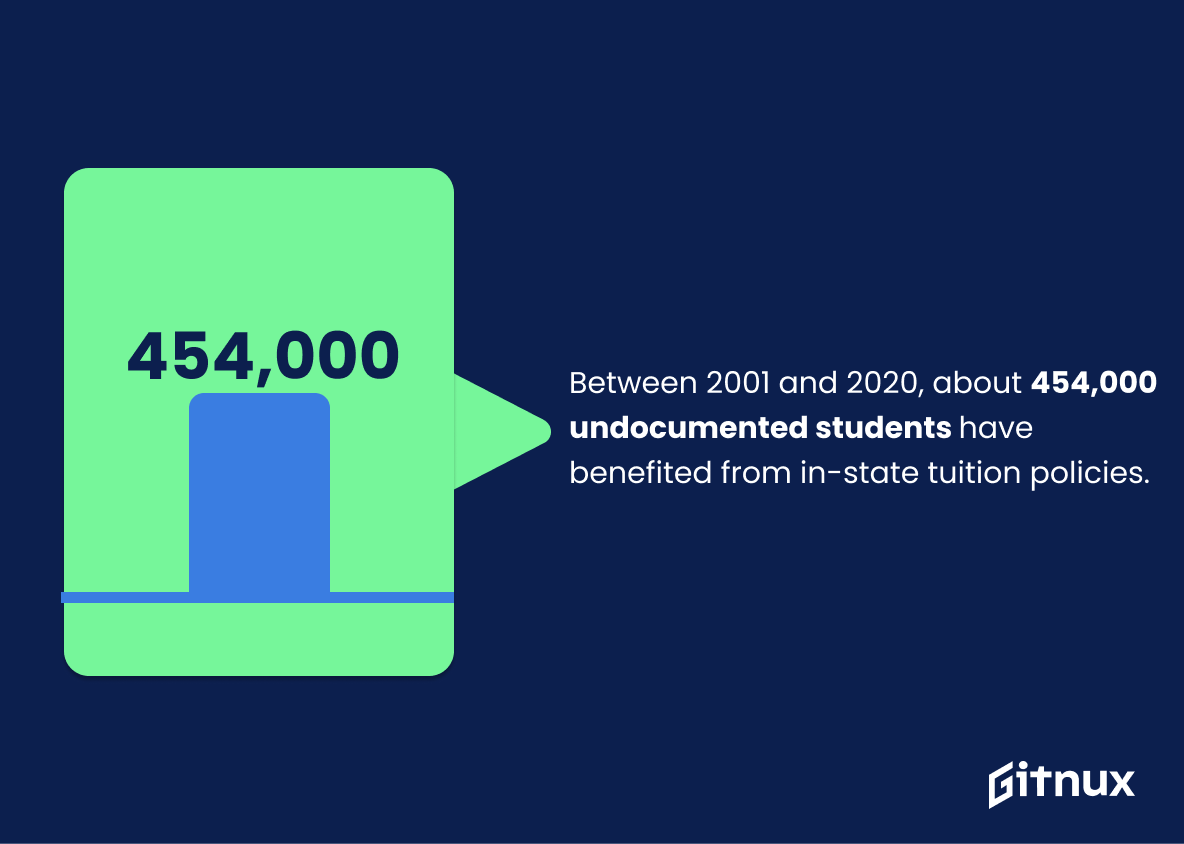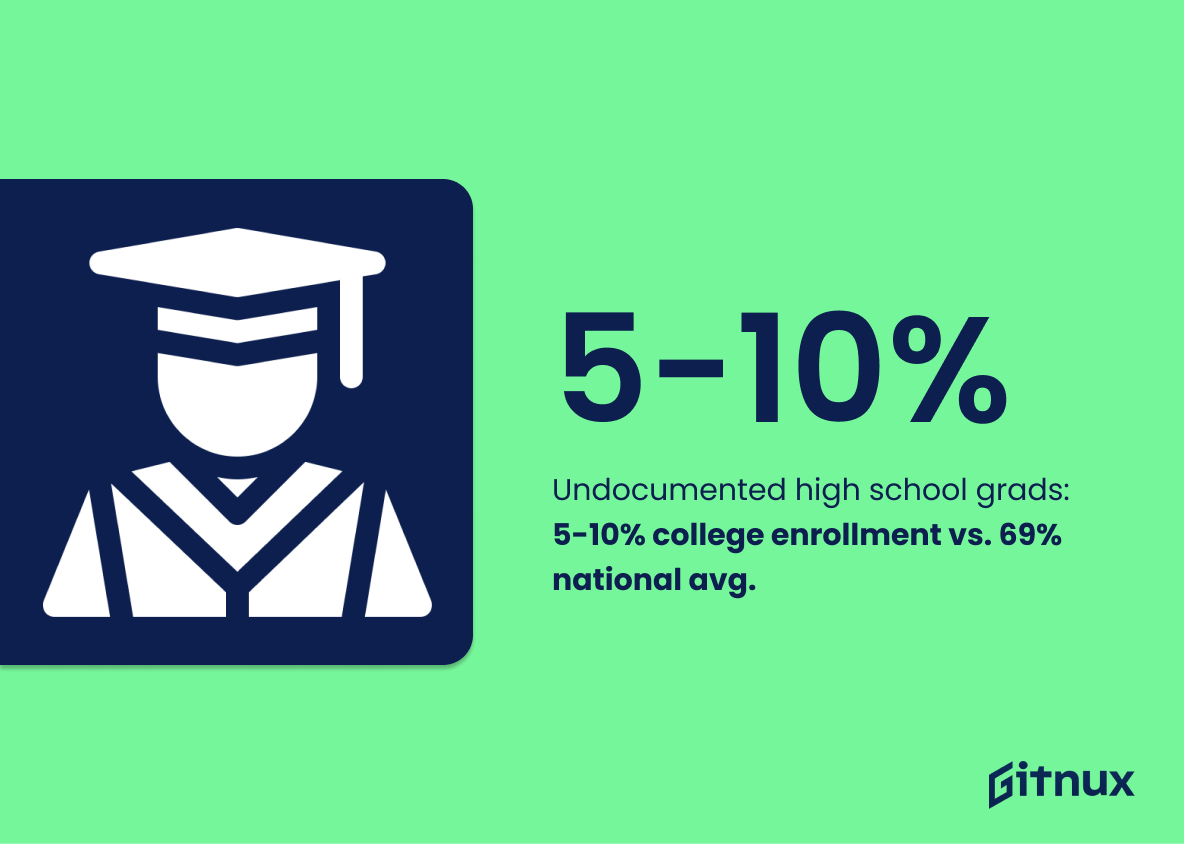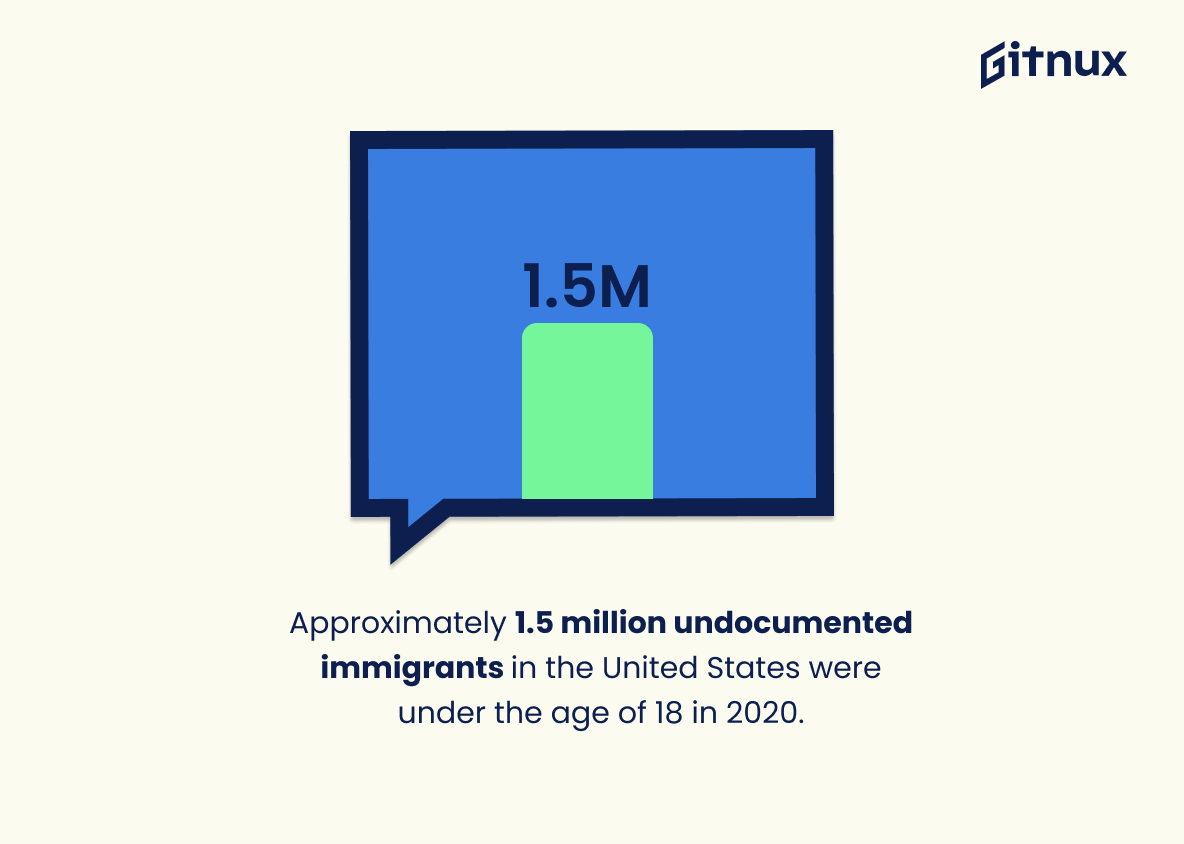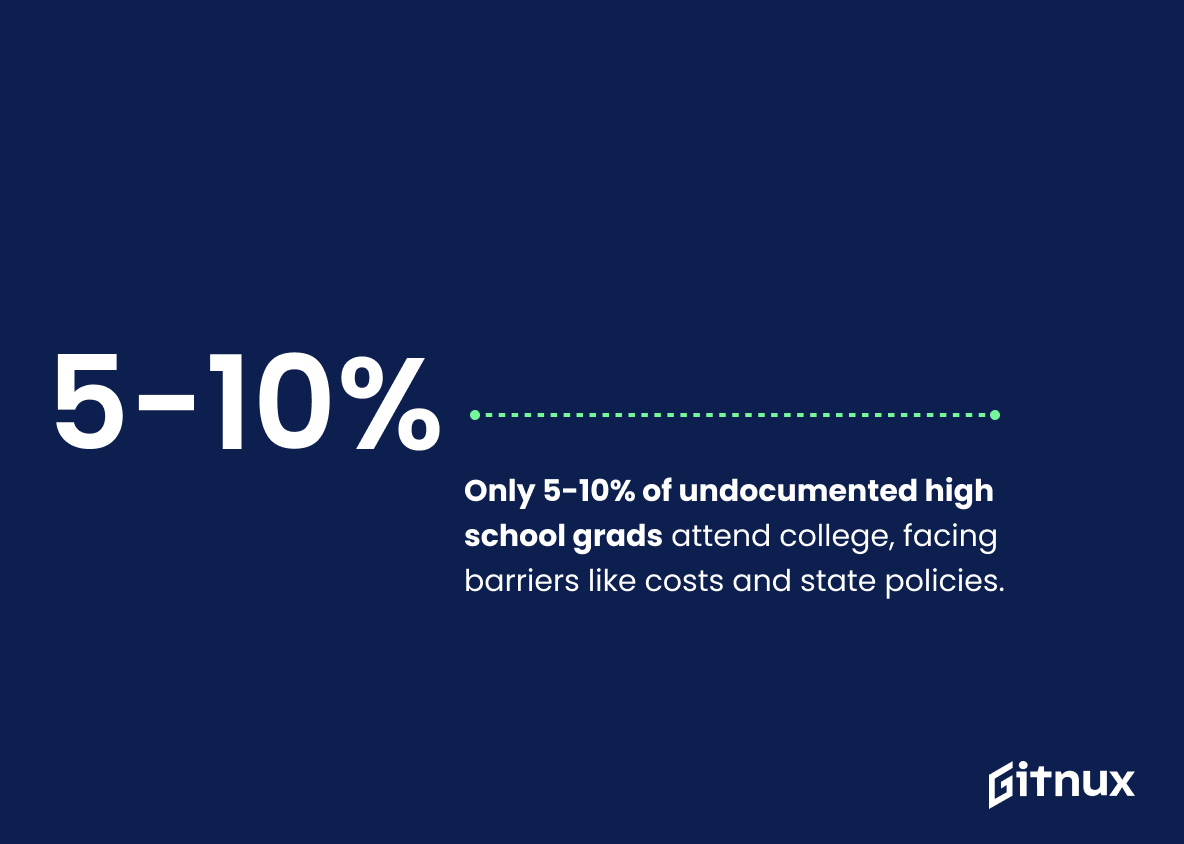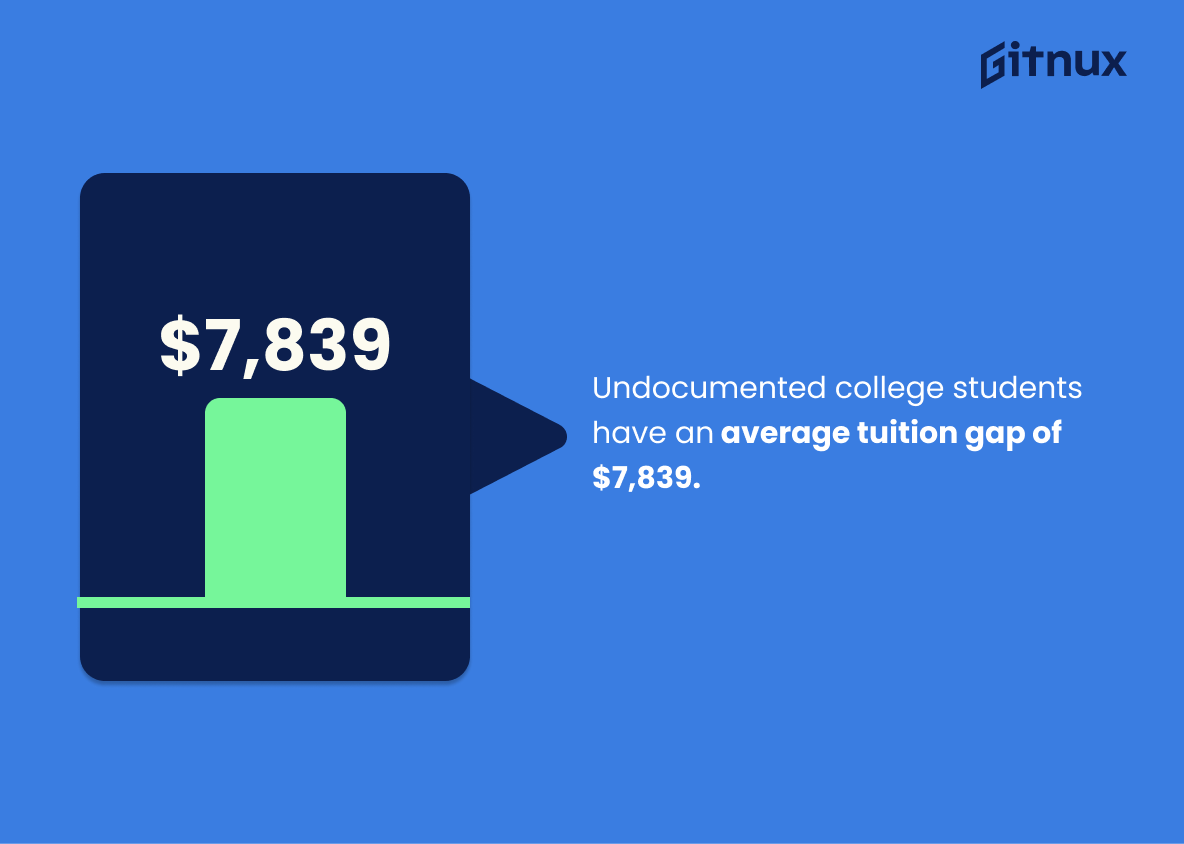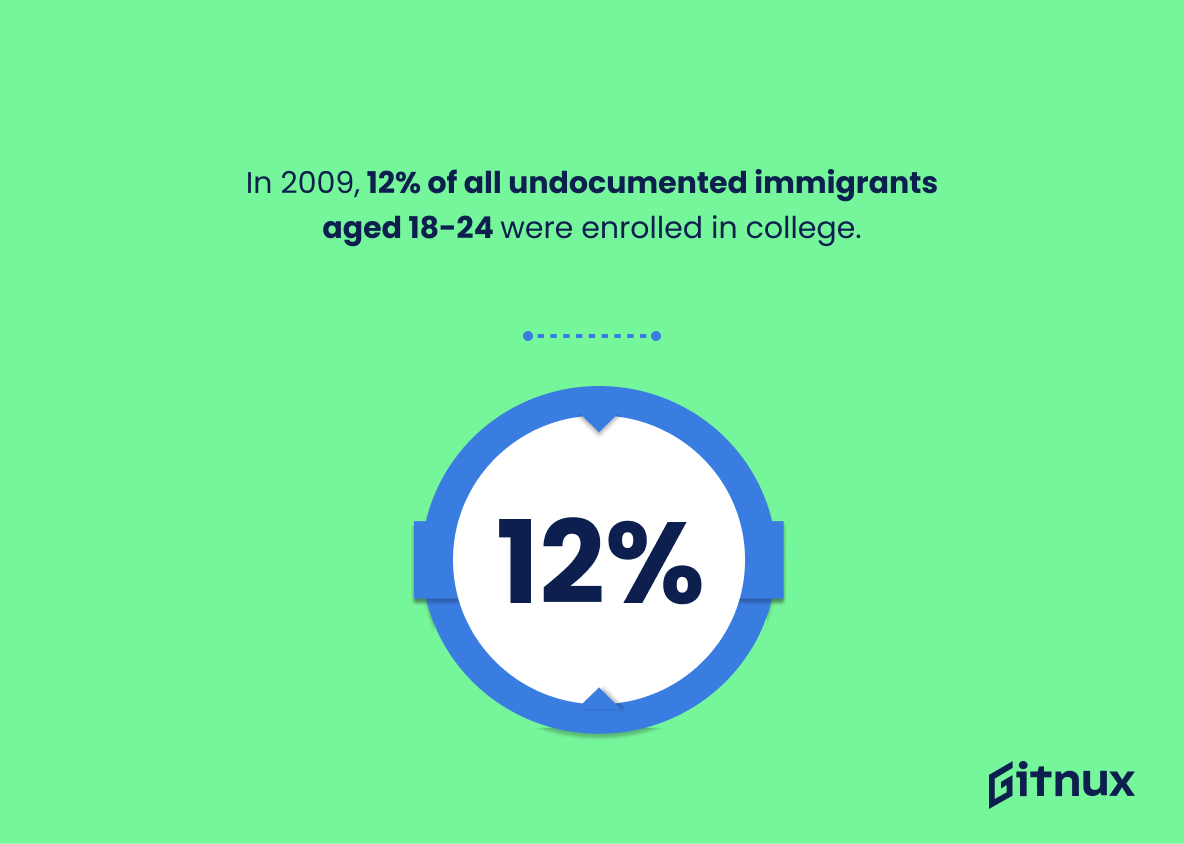The education of undocumented immigrants in the United States is a complex and often overlooked issue. Despite facing numerous financial, legal, and social barriers to accessing higher education, many undocumented students are still able to graduate from high school each year. This blog post will explore some key statistics related to illegal immigrant education in the US, including enrollment rates for K-12 schools and colleges as well as access to state tuition policies. We’ll also look at how these numbers have changed over time and what challenges remain for undocumented students seeking an education. Finally, we’ll discuss potential solutions that could help improve educational opportunities for this population going forward.
This statistic is a stark reminder of the immense number of undocumented students who are graduating from U.S. high schools each year. It highlights the importance of providing these students with the resources and support they need to succeed in their educational pursuits. It also serves as a reminder of the need to create a more inclusive and equitable educational system that is accessible to all students, regardless of their immigration status.
As of 2020, at least 29 states allow undocumented immigrants to access in-state tuition rates for higher education.
This statistic is a testament to the progress being made in providing undocumented immigrants with access to higher education. It highlights the fact that, despite the challenges they face, many states are taking steps to ensure that these individuals have the opportunity to pursue their educational goals. This is an important step in helping to create a more equitable society and is a positive sign for the future of illegal immigrants in the United States.
Illegal Immigrants Education Statistics Overview
50 to 75% of undocumented immigrant students end their education at high school.
This statistic is a stark reminder of the educational disparities between undocumented immigrant students and their peers. It highlights the fact that many undocumented immigrant students are unable to access the same educational opportunities as their peers, and are instead forced to end their education at the high school level. This statistic is a powerful indicator of the need for greater access to educational resources for undocumented immigrant students.
Approximately 76,000 undocumented students are enrolled in the Deferred Action for Childhood Arrivals (DACA) program in the United States.
This statistic is a powerful reminder of the importance of the Deferred Action for Childhood Arrivals (DACA) program in providing educational opportunities to undocumented students in the United States. It highlights the fact that, despite the challenges they face, these students are still striving to pursue their educational goals and are taking advantage of the opportunities available to them. This statistic is a testament to the resilience and determination of these students, and serves as a reminder of the importance of providing them with the resources and support they need to succeed.
49% of undocumented students who are eligible for DACA are enrolled in college, compared to 72% of US-born residents in the same age group.
This statistic serves as a stark reminder of the educational disparities between undocumented students and US-born residents. It highlights the fact that, despite being eligible for DACA, undocumented students are not receiving the same educational opportunities as their US-born peers. This disparity is a major issue that needs to be addressed in order to ensure that all students have access to the same educational opportunities.
9% of K-12 students in the U.S. have at least one undocumented parent.
This statistic is a stark reminder of the reality that many children in the United States are living with the fear of having their parents deported. It highlights the need for policies that protect the rights of these children and ensure that they have access to the same educational opportunities as their peers. It also serves as a reminder of the importance of providing resources and support to these families, so that they can continue to thrive in the United States.
61% of undocumented adult immigrants in the US have not completed high school.
This statistic is a stark reminder of the educational disparities that exist among undocumented adult immigrants in the US. It highlights the need for greater access to educational opportunities for this population, as well as the need for more resources to support their educational pursuits. It also serves as a reminder of the importance of providing a safe and supportive environment for undocumented immigrants to pursue their educational goals.
Approximately 30% of undocumented youth who are college-ready do not pursue higher education due to financial and legal barriers.
This statistic is a stark reminder of the immense obstacles that undocumented youth face when attempting to pursue higher education. It highlights the financial and legal barriers that prevent many of these students from accessing the same educational opportunities as their peers. This statistic serves as a call to action, emphasizing the need for more resources and support to ensure that all students, regardless of their immigration status, have the opportunity to pursue higher education.
65% of undocumented immigrant students live in low-income households (below 185% of the federal poverty level).
This statistic is a stark reminder of the economic hardship faced by undocumented immigrant students and their families. It highlights the need for increased access to resources and support for these students, who are often unable to access the same educational opportunities as their peers due to their immigration status. It also serves as a reminder of the importance of providing equitable educational opportunities for all students, regardless of their immigration status.
California, Texas, and Florida have the highest number of undocumented immigrant students in their K-12 education system.
This statistic is a powerful indicator of the impact of illegal immigration on the education system in the United States. It highlights the fact that the three states with the highest number of undocumented immigrant students are also the three most populous states in the country. This means that the number of undocumented immigrant students in these states is likely to be significantly higher than in other states, and that the educational resources available to them are likely to be stretched thin. This statistic is a stark reminder of the need for increased resources and support for undocumented immigrant students in order to ensure that they have access to the same educational opportunities as their peers.
Between 2001 and 2020, about 454,000 undocumented students have benefited from in-state tuition policies.
This statistic is a powerful reminder of the positive impact that in-state tuition policies have had on undocumented students. It demonstrates that, despite the challenges they face, these students have been able to access higher education and take advantage of the opportunities it provides. It also highlights the importance of providing equitable access to education for all students, regardless of their immigration status.
Only 10 US states offer state-funded financial aid to undocumented students, making it difficult for them to fund their education.
This statistic serves as a stark reminder of the immense obstacles undocumented students face when attempting to fund their education. With only 10 US states offering state-funded financial aid, the majority of undocumented students are left to fend for themselves, making it difficult for them to pursue higher education.
Undocumented high school graduates have an estimated 5-10% college enrollment rate, compared to the national average of 69%.
This statistic serves as a stark reminder of the educational disparities between undocumented high school graduates and their peers. It highlights the fact that, despite their hard work and dedication, undocumented students are not given the same opportunities to pursue higher education as their peers. This statistic is a call to action to ensure that all students, regardless of their immigration status, have access to the same educational opportunities.
Approximately 1.5 million undocumented immigrants in the United States were under the age of 18 in 2020.
This statistic is a stark reminder of the immense number of undocumented immigrants in the United States who are still in their formative years. It highlights the importance of providing educational opportunities to these young people, so that they can reach their full potential and contribute to society. It also serves as a reminder of the need to create a more inclusive and welcoming environment for undocumented immigrants, so that they can access the same educational opportunities as their peers.
Only 5-10% of undocumented high school graduates go on to college due to various barriers, including financial costs and state policies.
This statistic is a stark reminder of the immense obstacles that undocumented high school graduates face when attempting to pursue higher education. It highlights the financial costs and state policies that prevent many of these students from accessing the same educational opportunities as their peers. This statistic serves as a call to action to create more equitable access to college for undocumented students.
Undocumented students pursuing higher education face an average tuition gap of $7,839 between financial aid received and the cost of attendance.
This statistic serves as a stark reminder of the financial burden undocumented students face when pursuing higher education. The tuition gap of $7,839 is a significant amount of money that many undocumented students are unable to afford, making it difficult for them to access the same educational opportunities as their peers. This statistic highlights the need for more financial aid and support for undocumented students in order to ensure they have the same access to higher education.
In 2009, 12% of all undocumented immigrants aged 18-24 were enrolled in college.
This statistic is a powerful indicator of the dedication of undocumented immigrants aged 18-24 to pursue higher education. It speaks to the ambition and resilience of these individuals, who are often faced with significant obstacles to obtaining a college degree. This statistic is a testament to the hard work and determination of these immigrants, and serves as a reminder of the importance of providing them with the resources and support they need to succeed.
In 2018, there were about 454,000 undocumented immigrants enrolled in K-12 public schools in the United States.
This statistic is a powerful reminder of the reality of illegal immigration in the United States. It highlights the fact that there are thousands of undocumented immigrants who are enrolled in K-12 public schools, and that their presence is a significant part of the educational landscape. This statistic serves as a reminder that the issue of illegal immigration is not just a political issue, but a human one, and that these individuals are part of our communities and our schools.
Conclusion
Despite the numerous challenges that undocumented immigrants face in accessing higher education, there are still many who have been able to pursue their educational goals. Approximately 98,000 undocumented students graduate from U.S. high schools each year and at least 29 states allow them access to in-state tuition rates for higher education. However, due to financial and legal barriers such as not being eligible for federal financial aid or state-funded grants, only 5-10% of these graduates go on college with an average tuition gap of $7,839 between what they receive in aid and the cost of attendance. Despite this challenge however, 12% were enrolled in college back 2009 while 49% of those eligible for DACA are currently enrolled today – a testament to their resilience despite facing significant obstacles along the way.
References
0. – https://www.urban.org
1. – https://www.pewresearch.org
2. – https://www.migrationpolicy.org
3. – https://www.americanprogress.org
4. – https://www..ed.gov
5. – https://www.files.eric.ed.gov
6. – https://www.depts.ttu.edu
7. – https://www.ncsl.org
8. – https://www.brookings.edu
